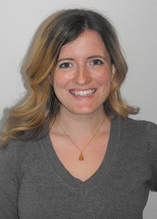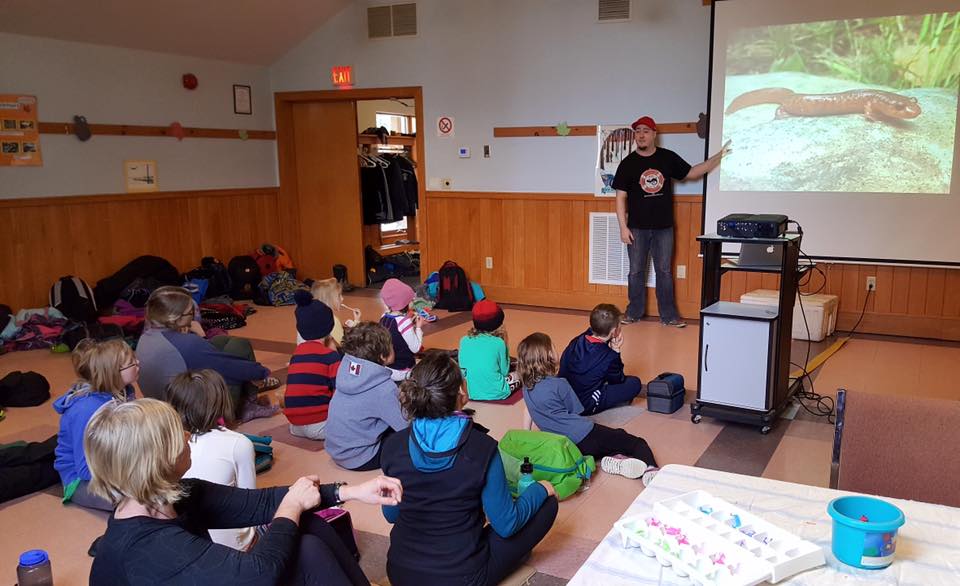|
By Jackie Hamilton If you are like I once was, the word forestry evokes an image of lumberjacks or large clear-cuts. I have learnt a lot while working in in the sector and I am writing today to try and convince you that forestry is not a bad word for biodiversity. I have had the pleasure of seeing forestry around the world. From what I have seen, our practices in Ontario are some of the best for biodiversity. I am not saying things are perfect, but I am making a plea to you today to learn more about forestry in Ontario. It might surprise you. Ontario has a lot of certified sustainable forest land when compared to other places. This means that third party certification bodies agree our forests are being managed sustainably. For example the Forest Stewardship Council (FSC) is a well-known and respected third party certification body. In this province, to be a Professional Forester you are regulated the same way an engineer might be. I am currently going through the process of becoming a registered professional myself. I can verify that the process is thorough and foresters in Ontario are competent and experienced before practicing. Being a forester does not just mean cutting trees for timber, but that can be a part of it. As someone who cares about biodiversity, I want the products that we use everyday to be coming from sustainable sources. Ontario’s foresters are working to try and ensure this is the case. Ontario forest products include many of the traditional uses such as furniture, flooring, and fire wood. But they are more recently becoming strong petroleum and steel replacements.New products include biofuel, plastic replacements and composite wood beams. Most of our forests in southern Ontario are fragmented from development. They are facing threats like invasive species. Oonce you learn to identify an invasive species, you will begin to see them everywhere. These forests require active management to maintain ecological integrity and biodiversity. Otherwise, they will become something near monocultures of invasive species that support little diversity. I have seen several examples of this around abandoned industrial sites and even in people’s backyards. Because many of our forests are near our communities, we suppress natural disturbances like fire. Fires would naturally increase habitat and biodiversity. With fire suppression, forest management becomes even more critical for biodiversity. A big and growing area of forestry is the one I work in, urban forestry. Forest management requires that you think long into the future about what your forest will look like. It also requires you to consider the ecological, social and economic impacts of your management decisions. It’s obvious that managing urban forests requires these same considerations. Maybe even more so. The University of Toronto’s Faculty of Forestry is the oldest Faculty of Forestry in the country. It’s also where I studied forest management and forest conservation. The faculty brings together foresters, economists, entomologists, ecologists, government, NGO and industry professionals. It facilitates open discussions about the challenges and opportunities facing forests in Ontario. The university is currently going through consultation to determine the fate of the 100+ year old institution. You can learn more about how the Faculty has affected others, and add your voice to the petition here.
1 Comment
By Matt Ellerbeck When I was small child, I lived in the Greater Toronto Area in southern Ontario. As such, the urban sprawl that accompanied this region did not leave me many places to explore and connect with nature. I would spend my summers visiting family at campgrounds. It was here that I encountered my first ever salamander, a Red Eft (Notophthalmus viridescens). I was instantly enthralled by this charming amphibian. Years later, the memory of my first salamander encounter is still very vibrant in my mind. It is a testament to my passion for these creatures! This passion lead me to start my outreach education project: Save The Salamanders. The goal of my project is to raise awareness among the general public that many salamanders are in decline and in need of conservation. I promote behavioural changes, habitat management, and environmental stewardship. These are ways that individuals can help contribute to the conservation of salamanders. I strive to empower the public and encourage them to get active with the recovery of species. Outreach education is important. The Amphibian and Reptile Conservancy (ARC) recognizes the need to increase awareness, appreciation, and understanding of amphibians, reptiles and their habitats. This education can then enhance conservation actions and stewardship practices. The Amphibian and Reptile Conservation Trust also proclaims that education is one of the most important tools in the long-term conservation of amphibians and reptiles. Raising awareness, enhancing knowledge and encouraging people to take action, are important steps towards conserving amphibian and reptile species. This is why I have made it one of my top priorities. Aside from my Save The Salamanders project, I am also a partner of the Amphibian Survival Alliance (ASA). The ASA is the world's largest partnership for amphibian conservation. The Amphibian Ark (AArk) also featured me as one of their Amphibian Ambassadors. The AArk is a joint effort of several principal partners. This includes the World Association of Zoos and Aquariums and the IUCN Conservation Breeding Specialist Group. My efforts to contribute to the betterment of salamanders earned me the nickname Salamander Man. British author, Claire McClennan wrote about my salamander conservation efforts in her book: Another Chance Animal Rescues - Book 2 (2012). It was here that I was first referred to as Salamander Man. Since that time it has become my moniker. The nickname has become a favourite among children, who are often one of my target audiences. This is important according to the Canadian Environmental Grantmakers' Network. Environmental education focused on children and youth is a particularly important strategy. It's an opportunity to intervene at a key developmental stage of life. Children can also be an important influence on their parents’ environmental behaviour. Throughout my outreach education, I have heard time and time again from individuals of varying ages, “I didn’t know we even had salamanders here!” This statement alone represents one of the biggest hurdles salamanders face, lack of attention. Worldwide there are some 600 different species. Of these species, around half are listed as at risk of extinction by the International Union for Conservation of Nature (IUCN). But how can people want to protect what they are not aware of? This is why I aimed to bring as much focus to the cause as possible. As such, I have appeared on TV, radio shows, and in many newspapers and publications across North America and Europe. This include high profile radio shows such as CBC in Ontario. I also appeared on Talking Animals, which airs in Tampa, Florida. The guests featured on this show tend to be prominent figures in the animal world, or notable celebrities who have ties to animal welfare. Past guests have included Jane Goodall, Chrissie Hynde, Paul Watson, Janeane Garofalo, Moby, Margaret Cho, and many others. I was also featured on Animals Today radio, which airs across 17 states, and on CiTR 101 FM, which provides listening to a base of over 2 million. I sincerely hope my efforts will contribute to the betterment of salamanders. And that it will inspire others to do the same!
|
ELB MembersBlogs are written by ELB members who want to share their stories about Ontario's biodiversity. Archives
January 2023
Categories
All
|











 RSS Feed
RSS Feed